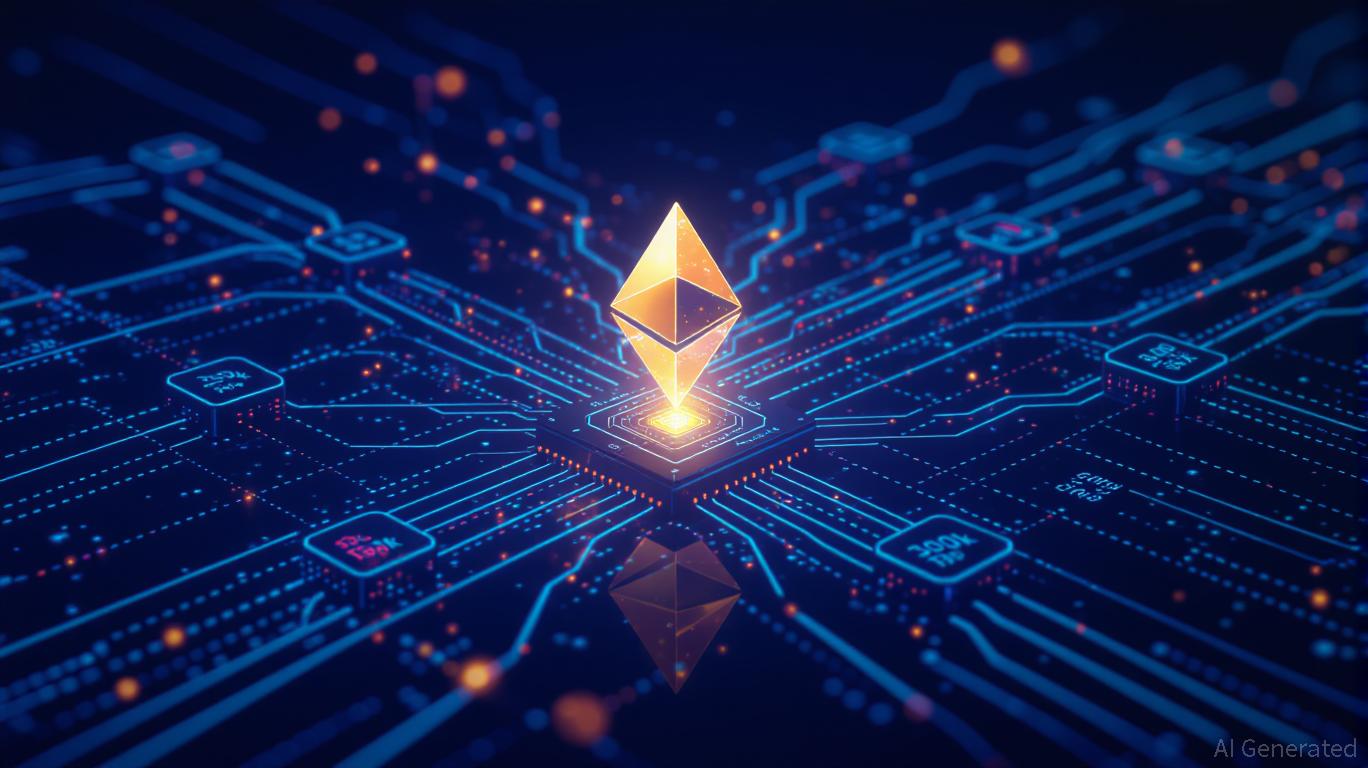Astar 2.0’s New Direction: Leading the Way in Blockchain Expansion and Business Integration
- Astar Network's Astar 2.0 roadmap (2023-2025) targets blockchain scalability and enterprise adoption through zkEVM and cross-chain interoperability. - The platform achieved 150,000 TPS via hybrid architecture, aiming for 300,000 TPS to enable enterprise-grade applications across Ethereum , Polkadot , and BSC. - Strategic partnerships with Toyota , Japan Airlines, and Sony demonstrate blockchain's real-world utility in supply chains, loyalty programs, and asset tokenization. - Staking 2.0 governance and c
A New Era of Scalability: From Concept to Implementation
Central to Astar 2.0 is its zkEVM mainnet, which debuted in 2024, allowing Ethereum-compatible applications to function with much lower gas costs and increased transaction throughput. This breakthrough directly addresses Ethereum’s persistent scalability limitations, providing developers with an affordable solution that maintains compatibility with current tools. As highlighted in a Bitget report, the network has already reached 150,000 transactions per second (TPS), with plans to boost this to 300,000 TPS—a milestone essential for large-scale enterprise deployment, according to a
The platform’s hybrid framework, known as Astar Link, further advances scalability by connecting the

Enterprise Integration: From Alliances to Tangible Applications
The significance of Astar 2.0 extends well beyond technical progress. The network has established alliances with major global brands—including Casio, Mazda, Japan Airlines, Sony, and Toyota—to incorporate blockchain into conventional business sectors. These partnerships cover areas such as logistics, loyalty programs, and tokenization of real-world assets (RWA), illustrating blockchain’s real-world value outside of speculative markets.
For example, Astar’s collaboration with Toyota’s supply chain aims to boost transparency and traceability in car manufacturing, while its work with Japan Airlines is focused on blockchain-powered loyalty solutions. These efforts reflect a broader movement among corporations to leverage decentralized technology for cost reduction and operational improvements. As mentioned in the Bitget coverage, Astar’s emphasis on real-world asset tokenization is especially attractive to institutional investors, as it paves the way for new asset-backed DeFi offerings.
Institutional Focus: Governance, Regulation, and Security
For institutions, adoption requires more than just scalability—it also demands strong governance and adherence to regulations. Astar 2.0 meets these needs with its Staking 2.0 framework, which brings a decentralized governance structure that aligns the interests of developers, validators, and users. This approach empowers stakeholders to participate in protocol decisions, ensuring the network evolves transparently and with community input, as described in the Bitget analysis.
Moreover, Astar has implemented top-tier security protocols, including comprehensive smart contract audits and compliance solutions tailored for institutional users. These safeguards are vital for attracting traditional investors who may be cautious due to the volatility and regulatory uncertainty that have historically affected the crypto industry.
Summary: Astar 2.0 Driving the Next Generation of Web3
Astar Network’s strategic transformation through Astar 2.0 offers a comprehensive solution to the challenges of blockchain scalability and enterprise integration. By blending technological advancements with real-world collaborations, the platform is not only overcoming the shortcomings of current blockchains but also building a bridge between decentralized networks and established industries. For investors, this positions Astar as a significant contender in the emerging Web3 infrastructure landscape, where scalability and institutional confidence intersect.
As the roadmap for 2023–2025 unfolds, Astar’s achievements in TPS, cross-chain compatibility, and corporate partnerships will serve as key measures of its sustainability. Those who appreciate the importance of these developments may see Astar 2.0 as a promising investment in the future of blockchain technology.
Disclaimer: The content of this article solely reflects the author's opinion and does not represent the platform in any capacity. This article is not intended to serve as a reference for making investment decisions.
You may also like
Lighter Secures $68 Million to Drive Institutional DeFi Expansion Despite Market Hesitancy
- Lighter secured $68M in a new round led by Founders Fund and Ribbit Capital, valuing it at $1.5B to boost DeFi trading infrastructure. - The funding aligns with a broader crypto VC surge, including Ripple's $500M and Lava's $200M, highlighting institutional interest in blockchain finance. - CEO Vladimir Novakovski emphasized scaling infrastructure with both equity and token subscriptions to enhance institutional-grade trading solutions. - Despite market caution, DeFi protocols like Lighter attract invest
JPMorgan and DBS Establish Unified Cross-Chain Protocol for Institutional Transactions
- JPMorgan and DBS develop blockchain framework for cross-chain tokenized deposit transfers, aiming to set institutional payment standards. - The framework links DBS Token Services with JPMorgan’s Kinexys, enabling 24/7 real-time settlements across public and permissioned blockchains. - It addresses cross-border transaction demands, reducing fragmentation as global banks adopt tokenization. - Overcoming interoperability challenges could redefine institutional liquidity access and market reach.

JPMorgan and DBS Develop Cross-Chain Bridge to Compete with Stablecoin Leaders
- JPMorgan and DBS Bank launch cross-chain framework for real-time tokenized deposit transfers between institutional clients, bypassing traditional payment systems. - The "interoperability highway" enables 24/7 settlements across public/private blockchains while maintaining consistent token value, expanding cross-border transaction capabilities. - As 1/3 of global banks explore tokenized deposits, the partnership challenges stablecoin dominance by offering institutional-grade cross-chain solutions with red
AI's Growing Demand for Power Pushes the Energy Industry Into an Intense Sustainability Competition
- Energy and tech sectors collaborate to address AI's surging energy demands through sustainable computing infrastructure and efficient GPU solutions. - Devon Energy and Alliant Energy boost capital spending on grid modernization and storage, aligning with AI-driven power needs while maintaining shareholder returns. - NVIDIA advances open-source GPU efficiency via Nova driver, yet faces market volatility as AI sector grapples with financial risks and regulatory pressures. - Industry challenges include bala
